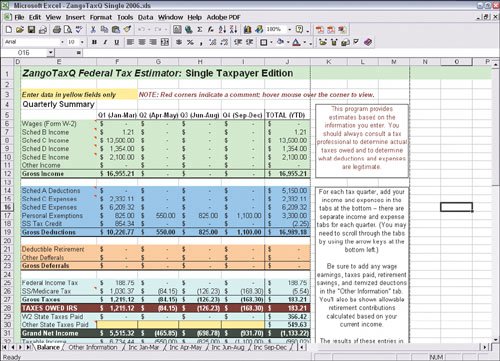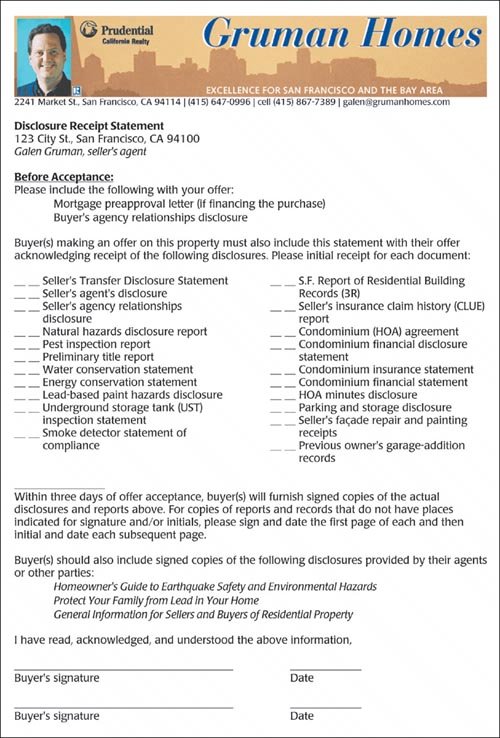Using Tools to Manage Tasks
| Keeping track of details is an eternal issue for real estate agents, and there's never been a shortage of "solutions" to the problem in the form of paper and hand held organizers, paper and electronic calendars, and so on. Of course, no tool will keep you organized or on scheduleyou ultimately have to use these tools and have a system in place that takes advantage of them. Having a system is keyand it doesn't really matter whether you use one designed by a time-management expert, one based on a management system such as Franklin Organizer, or one you create yourself. By handling tasks systematicallyknowing what they are, when they are due, and when they have been handledyou'll greatly reduce the chance of forgetting a vital step. But technology can make the process of managing tasks easier. You'll find that different technologies can help make it easier to manage different kinds of tasks. Appointments, Contacts, and To-Do ItemsElectronic calendarsprograms like Microsoft's Outlook or Now Software's Up-to-Date and Contact that run on your computer, or functions built in to your handheld organizer or cell phoneare very handy, since they can be set to alert you to deadlines ahead of time. Plus it's often easier to read the appointments, tasks, and reminders on screen than decipher a note on paperat least for someone with handwriting like mine. It's hard to find a calendar program today that doesn't manage contacts and to-do lists. And that's a good thing, because you can use one tool to manage all these details. Because real estate agents often work away from an office, I recommend that you use a handheld organizer or keep a laptop with you to run these tools. (Chapter 1, "The Right office Tools," covers the hardware and software tools you might use. Chapter 8,"Managing Your Contacts," covers the process of contact management in more detail.)
Financial InformationTo manage financial informationyour income and expensesyou should use a spreadsheet program like Excel or a basic accounting tool like Intuit Quicken or Microsoft Money. Ifyou're savvy about accounting, you'll prefer a professional program like Intuit QuickBooks. I find that the spreadsheet and the professional accounting program are the best tools for me, since the basic accounting applications are really glorified checkbook registers, lacking the categorization options that let you track expenses in various areas and quickly figure out your net profit each quarter. Checklist Tools To Manage Tasks Among the tools that help you stay in control of the tasks and transaction details you must manage are the following:
Yes, I know that no one but me likes to do accounting and taxes. But if you don't manage your finances, you could be hit with big tax penalties for underpaying taxes during the year, miss out on deductions, or get into a bind when your expenses start exceeding your current incomereal estate, after all, is not a steady business for the vast majority of us. You don't have to put on green eye shades and be an accountant to keep a log of your expenses, so at the minimum, keep that log.
Tracking expenses and taxes using a program like ZangoTaxCalcQ helps reduce unpleasant surprises like tax penalties and cash-flow crunches.  ListsTo manage lists for a specific tasksuch as a list of homes to visit during a broker's tour or a list of documents to review for a buyera word processor remains my favorite tool. Unlike the to-do lists in contact managers and personal organizers, a word processor gives you a lot of room for detail, so your lists can beas long as they need to be. In a business where agents are sued for not dotting all the i's and crossing all the t's in reviewing documents and ensuring the client has all relevant information, I believe it's critical to have complete lists. Using a word processor lets you do that. And it's amazing how many things you can create lists for that are truly helpful in the real estate business. If you're listing a property, I strongly recommend you compile a list of all the documents that you have for your disclosures to potential buyers and create a checklist form, so they know what to look for. It helps both you and the buyer's agent ensure that all the documents have been delivered. Because these documents tend to be the same across transactions, you can create a template in a program like Word that you then modify for each listing. Likewise, you can use a template file to create a personalized checklist for sellers of all the items and tasks they need to handle to prepare their home for sale. If you're representing a buyer, there are all sorts of lists you can create. Here are a few examples:
Lists generated in a word processor can help both you and your clients ensure that all details are handled in a transaction. Here's one I use for disclosures in my listings.  Keep these lists in a folder on your computer so they're all easily accessible if you need to make a copy for each transaction. |
EAN: 2147483647
Pages: 100
- Measuring and Managing E-Business Initiatives Through the Balanced Scorecard
- A View on Knowledge Management: Utilizing a Balanced Scorecard Methodology for Analyzing Knowledge Metrics
- Measuring ROI in E-Commerce Applications: Analysis to Action
- Governance in IT Outsourcing Partnerships
- Governance Structures for IT in the Health Care Industry